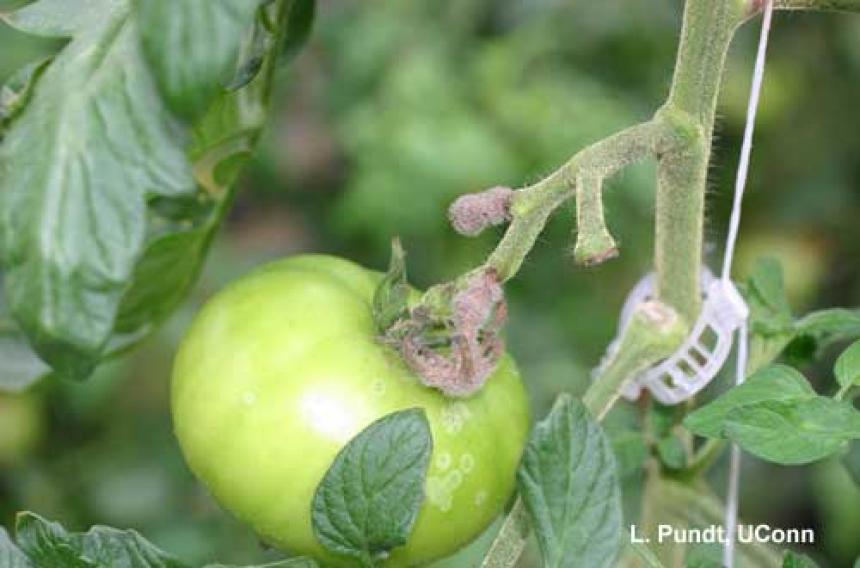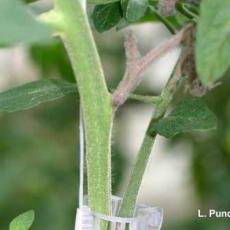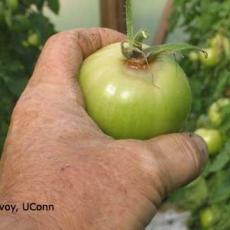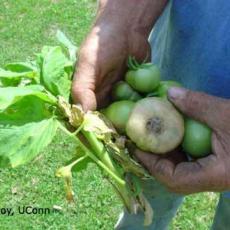Note the pale white halo's or ring spots on the green tomato fruit. On ripe fruit, the ringspots may be yellow. Ghost spots develop when the fungus initiates infection, but disease progress is stopped by adverse environmental conditions.This spotting may adversely affect market quality. A change to favorable conditions allows Ghost Spot to proceed to fruit rot.
Botrytis gray mold symptoms on older leaves appear light tan. Note the lesions are beginning to run up veins. As the disease progresses, stems can become infected so that the plants may be girdled and die.
Botrytis leaf spot, stem canker, blight, and ghost spot is caused by Botrytis cinera. This pathogen is very important on greenhouse tomatoes or hydroponic systems. This pathogen is ubiquitous in the environment, has an extremely wide host range, and prefers to attack senescent and/or injured tissue. Botrytis can be controlled by management of environmental conditions, sound cultural practices, and fungicide applications. Control weeds and remove plant debris. Space plants to allow good air circulation, reduce humidity within the canopy, and minimize leaf wetness. Improve horizontal air flow with fans. Reduce humidity by a combination of heating and venting in the evening, particularly when warm days are followed by cool nights. Water in the morning if practical. Fungicides appropriate for Botrytis include 26 GT, 26/36, Compass, Cleary's 3336, Botran, Decree, Daconil, Dithane, Heritage, Exotherm Termil, Sextant, Protect DF, and Medallion. Check label for host appropriateness. Resistance to Cleary's 3336, 26 GT, and Sextant has been reported in Botrytis populations. Always alternate fungicide applications between materials with different modes of action to prevent resistance development.
Fact Sheets:




